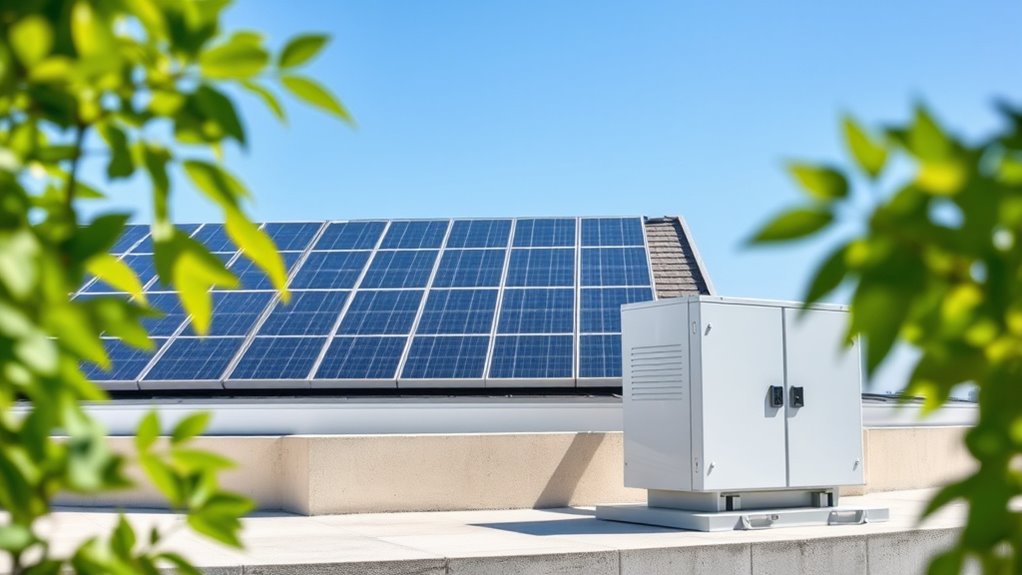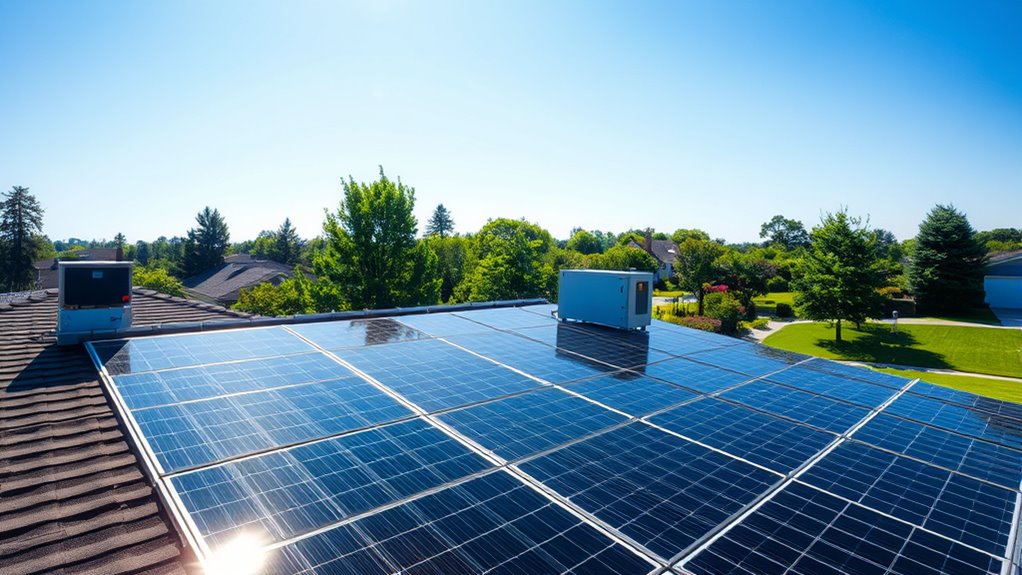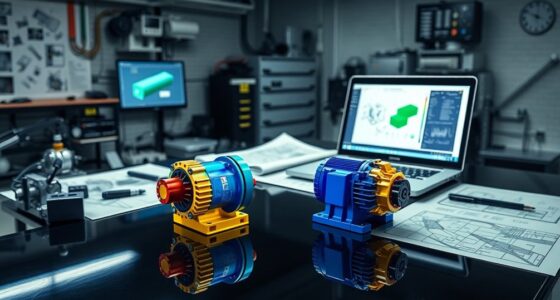Adding solar storage to your home can substantially boost your energy independence, help you cut electricity bills, and provide reliable backup during outages. By storing excess solar energy, you can use it when needed, reducing reliance on the grid and saving money over time. While there’s an upfront investment, incentives and long-term savings make it worth considering. If you’re curious about the full benefits and costs, there’s more to explore.
Key Takeaways
- Solar storage maximizes energy use, reduces grid reliance, and lowers electricity bills over time.
- Initial costs are offset by long-term savings, incentives, and rebates, making it financially beneficial.
- Proper installation involves assessing energy needs, professional setup, and compliance, typically completed in days.
- Storage provides backup power during outages, enhancing emergency preparedness and system resilience.
- Overall, the investment leads to significant cost savings, energy independence, and peace of mind.

Installing solar storage for your home allows you to maximize the benefits of your solar panels, ensuring you have power even when the sun isn’t shining. One of the main advantages of adding a storage system is the potential for significant cost savings. By storing excess energy generated during sunny days, you can use it during peak demand times or at night, reducing your reliance on the grid and lowering your electricity bills. Over time, these savings can offset the initial investment, making solar + storage a financially smart choice. Additionally, some regions offer incentives or rebates for installing energy storage, further enhancing your savings.
Maximize solar benefits, save costs, and get backup power with home solar storage.
When considering solar storage, understanding the installation process is essential. It typically involves evaluating your energy needs, selecting the right-sized battery system, and coordinating with a certified installer. The process begins with a thorough assessment of your current solar setup and energy consumption patterns. This helps determine the ideal capacity for your storage system, ensuring you don’t overspend on unnecessary capacity or underperform with insufficient storage. Once you’ve chosen a system, the installation involves mounting the batteries, wiring them to your existing solar inverter, and integrating with your home’s electrical system. While this process might seem complex, professional installers streamline it, ensuring safety and compliance with local codes.
The installation process can vary depending on your home’s layout, existing infrastructure, and local regulations. It usually takes a few days to complete, during which your home may experience some disruptions. However, a professional team will coordinate these steps efficiently, taking care of permits and inspections, so you don’t have to worry. After installation, you’ll typically need some initial setup, including configuring your system to prioritize stored energy or grid backup, depending on your preferences.
In terms of costs, expect the upfront investment to include the price of the batteries, installation fees, and any necessary upgrades to your electrical system. While this can seem expensive initially, the long-term savings on energy bills, combined with potential tax incentives, can make solar storage a worthwhile investment. Plus, having a reliable backup power source adds peace of mind during outages, which is invaluable in emergencies.
Frequently Asked Questions
What Is the Typical Lifespan of a Home Battery System?
A typical home battery system lasts about 10 to 15 years, but battery degradation can reduce its capacity over time. You should also check warranty coverage, which often guarantees performance for 10 years or more. Proper maintenance and avoiding deep discharges help extend its lifespan. Keep in mind that technology is advancing, so newer batteries may offer longer durability and better performance over time.
How Much Maintenance Do Solar Storage Systems Require?
While battery maintenance might seem intimidating, it’s surprisingly minimal for most systems. You’ll need to occasionally check for corrosion, keep the system clean, and monitor performance, but these tasks are straightforward. Proper maintenance actually boosts system durability, ensuring your storage lasts longer. Compared to the benefits of reliable backup power and energy savings, the effort is well worth it. With simple upkeep, your solar storage system stays efficient and dependable for years.
Can Solar Storage Increase My Home’S Resale Value?
Adding solar storage to your home can boost its resale value by attracting buyers interested in energy efficiency and lower utility costs. It enhances your property appeal, showing you’re invested in sustainable upgrades. Potential homeowners see solar + storage as a smart, modern feature, making your home stand out. Overall, it’s a valuable investment that can increase resale value and make your property more appealing in a competitive market.
Are There Any Government Incentives for Installing Solar Storage?
You might find government rebates and tax credits helpful when considering solar storage installation. Many programs, like federal tax credits, can cover a significant portion of your costs, making it more affordable. Some states also offer additional incentives. Check with local authorities or your installer to see what’s available in your area. Taking advantage of these incentives can boost your savings and make going solar with storage even more worthwhile.
How Do I Choose the Right Size of Storage for My Needs?
Think of choosing your storage like tuning a musical instrument; it needs to match your needs perfectly. To do that, consider your battery capacity and usage patterns. If you often use power during outages or want to maximize solar savings, opt for a larger system. For lighter needs, a smaller capacity might suffice. Assess your energy habits and daily routines to find the ideal size that keeps your home humming smoothly.
Conclusion
Investing in solar plus storage can truly pay off by saving you money and reducing your carbon footprint. While it might seem like a big step now, remember: “A penny saved is a penny earned.” With the right system, you’ll enjoy reliable power and peace of mind for years to come. So, weigh your options carefully—you might find that the benefits outweigh the costs, making it a smart move for your home and the planet.










